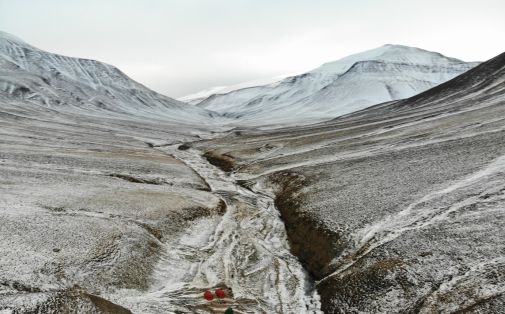Mass extinctions – Lessons from the past
A new study led by Dr. Martin Schobben (Museum für Naturkunde, Berlin), with co-authors from the Dept. for Geosciences (UiO), describes the causal chains between environmental changes and mass extinction at the Permian-Triassic boundary about 252 million years ago. From this study, scientists can get a glimpse of what might happen to biodiversity under the predicted global warming in the near future. New publication in Nature Geoscience.
This new study analysed two geological sections in Svalbard: one at Festningen in western Spitsbergen, and a core that Sverre Planke and his team (University of Oslo/Natural History Museum in London) recovered from Deltadalen in central Spitsbergen
